Are you tired of feeling tension in your neck, shoulders and back after long hours at your desk? You’re not alone. Many office workers experience discomfort and pain from sitting for long periods of time. The good news is that you can alleviate these problems with a short and effective 10-minute office exercise routine. You can do these exercises during your break or spread them out throughout the day. In just 10 minutes, you can perform a series of office exercises that will help relieve discomfort and improve your posture.
Benefits of Office Exercises:
By incorporating these office exercises into everyday life, desk workers can reduce the discomfort they experience from long hours at a desk, improve their posture, and increase their overall well-being.
- Comfort: These exercises can be done right at your desk and require minimal space and equipment. The entire routine takes just 10 minutes and can be easily incorporated into a desk worker’s daily schedule, making it a practical choice for maintaining well-being during a busy work day.
- Scientifically supported: Research shows that a four-week routine of specific stretching exercises can significantly reduce neck and shoulder pain, improve neck function, and improve the quality of life of office workers with chronic moderate to severe neck or shoulder pain.
- Neck, shoulder and back relief: The routine includes specific exercises for the neck, shoulders and back, areas that often suffer from tension and pain due to desk work. These exercises help relieve muscle tension, reduce stiffness and promote better flexibility.
- Improving posture: Several exercises in the routine focus on improving posture by strengthening the muscles responsible for maintaining an upright position. Improved posture contributes to less discomfort and stress.
- Upper Body Strength: Exercises like wall push-ups, table inverted rows, and alternative shoulder flexion help desk workers strengthen their upper body muscles, which can be weakened by prolonged sitting.
- Stress reduction: Incorporating these exercises into your daily work routine can provide moments of relaxation and mindfulness, helping to reduce stress and increase overall well-being.
- Consistency is key: Although this routine is designed to only take 10 minutes, consistency is important. Performing these office exercises regularly can provide lasting relief and relief when working at your desk.
The best practical and effective office exercises
1. Arm circle (3×15 repetitions)
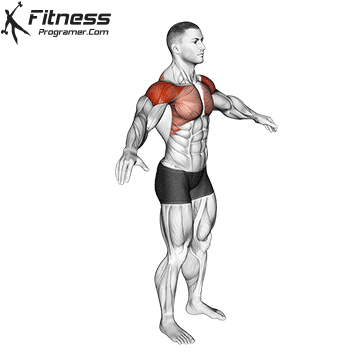
Advantages: Arm circles are a simple but effective way to train your shoulder muscles and improve shoulder mobility. This exercise helps reduce stiffness and promotes better blood circulation in the shoulder area, making it ideal for office workers.
Here’s how: Extend your arms to your sides at shoulder height. Make small, controlled circular movements with your arms, gradually increasing the size of the circles. Reverse direction after completing the sentence.
2. Neck rotation (3×10 seconds)
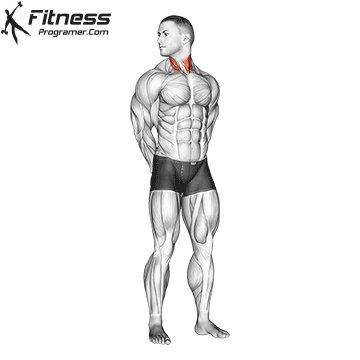
Advantages: Neck rotation Improves neck flexibility and relieves tension in the neck muscles. This is particularly beneficial for those who spend long periods of time at a desk.
Here’s how: Sit or stand upright. Slowly turn your head to the right and bring your chin toward your shoulder. Hold this position for 10 seconds. Bring your head back to center and repeat on the left side. Perform the movement carefully to avoid strain.
3. Neck flexion (3×10 seconds)
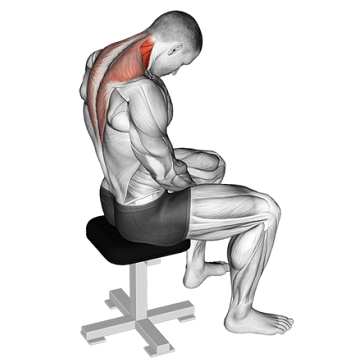
Advantages: This exercise specifically trains the neck muscles, relieves tension and counteracts the strain caused by long periods of working at a screen. It helps to improve neck posture.
Here’s how: Slowly pull your chin toward your chest and feel a gentle stretch in your neck. Hold this position for 10 seconds before returning to neutral position.
4. Neck extension (3×10 seconds)
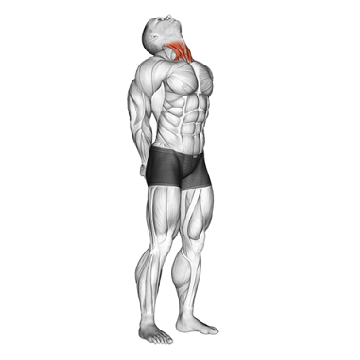
Advantages: Neck extension relaxes the muscles in the front neck area and promotes flexibility. It is effective in counteracting the discomfort caused by a forward leaning posture.
Here’s how: Gently tilt your head back and look at the ceiling. Hold for 10 seconds and then slowly return to neutral position.
5. Chin curl (3×10 reps)
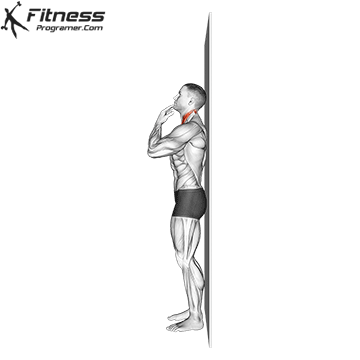
Advantages: The Pull up your chin Strengthens the neck muscles and helps relieve the forward head posture common among desk workers. (1,2)
Here’s how: Stand against a wall with your back straight. Gently press two fingers against your chin and push it forward. Hold the position for 3 to 5 seconds and then gently pull your chin back. Repeat 10 times.
6. Wall slides (3×15 reps)
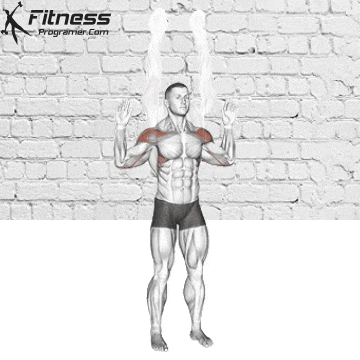
Advantages: Wall slides Improve shoulder mobility and strengthen the upper back, counteracting a hunched posture.
Here’s how: Stand with your back against a wall with your feet slightly away from it. Press your lower back into the wall. Raise your arms, slide them up along the wall, and then lower them back down. Repeat slowly.
7. Protraction and retraction of the scapula (3×10 repetitions)
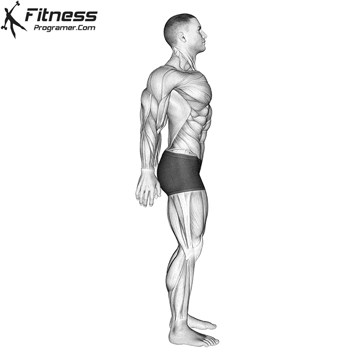
Advantages: This exercise improves scapular mobility, improves shoulder function, and reduces the likelihood of slouching.
Here’s how: Sit or stand upright. Extend your arms forward so that your shoulder blades move apart (protraction). Then squeeze your shoulder blades together (retraction).
8. Alternative shoulder flexion (3×10 reps)
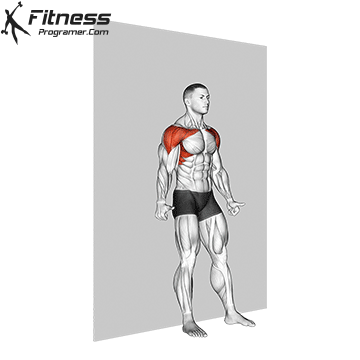
Advantages: Exercise helps increase the flexibility and range of motion of your shoulder joints, making everyday activities such as reaching overhead, dressing, and carrying objects easier.
How to do it: Stand with your back flat against a wall. Raise one arm straight above your head and try to touch the wall with your fingertips. Keep your other arm relaxed at your side. Slowly lower your raised arm back to your side. Repeat 10 times for each arm, alternating arms in a controlled movement.
9. Wall push-up (3×15 reps)
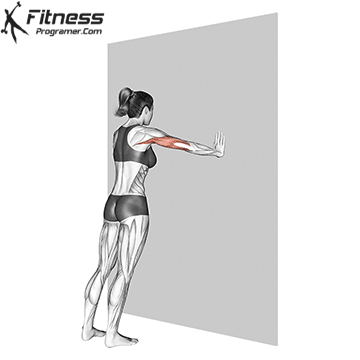
Advantages: Push-ups on the wall Strengthening the chest and shoulder muscles, which can become weaker due to prolonged sitting.
Here’s how: Stand at arm’s length from a wall. Place your hands on the wall at shoulder height. Lower your body toward the wall by bending your elbows, then push back to the starting position.
10. Table Inverted Row (3×15 reps)
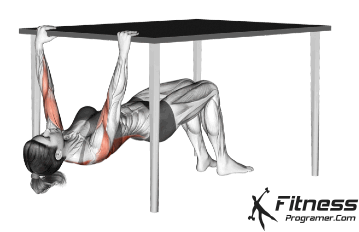
Advantages: This exercise strengthens the back muscles. It is a practical exercise that can be carried out in the office.
Here’s how: Use a sturdy table. Lie under it, grab the edge with your hands and pull your chest towards the table. Lower yourself back down in a controlled manner.
End the exercise with stretching: Doorway Stretch (3×10-15 seconds)
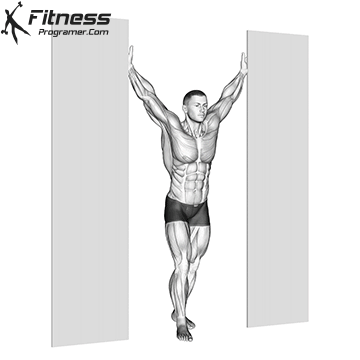
Advantages: This stretch exercise effectively stretches and relaxes the chest muscles, latissimus dorsi, and shoulder muscles, which can be tense and tense from working at a desk.
Here’s how: Always perform this stretch gently and within your comfort range. Place your hands on the door frame or walls of the doorway. Gently lean forward and allow your chest to move closer to the door frame. You should feel a gentle stretch in your chest and the front of your shoulders. Hold the stretch for 10-15 seconds while maintaining a comfortable breathing rhythm. Relax, step back and release the stretch
Avoid forceful or sudden movements and stop immediately if you experience discomfort or pain. Stretching should feel soothing and not painful. Repeat this stretch a few times throughout your workday to relieve upper body tension and improve posture.
The conclusion
These exercises are intended to be gentle and suitable for most people, but individual experiences may vary. Before beginning a new exercise program, it is important to consult a doctor or qualified fitness trainer, especially if you have a pre-existing medical condition, have concerns about your health, or are unsure about your fitness level.
Remember that these exercises are intended to supplement, not replace, the medical advice or treatment prescribed by your doctor. Always put your well-being and health first when incorporating new exercises into your routine.





